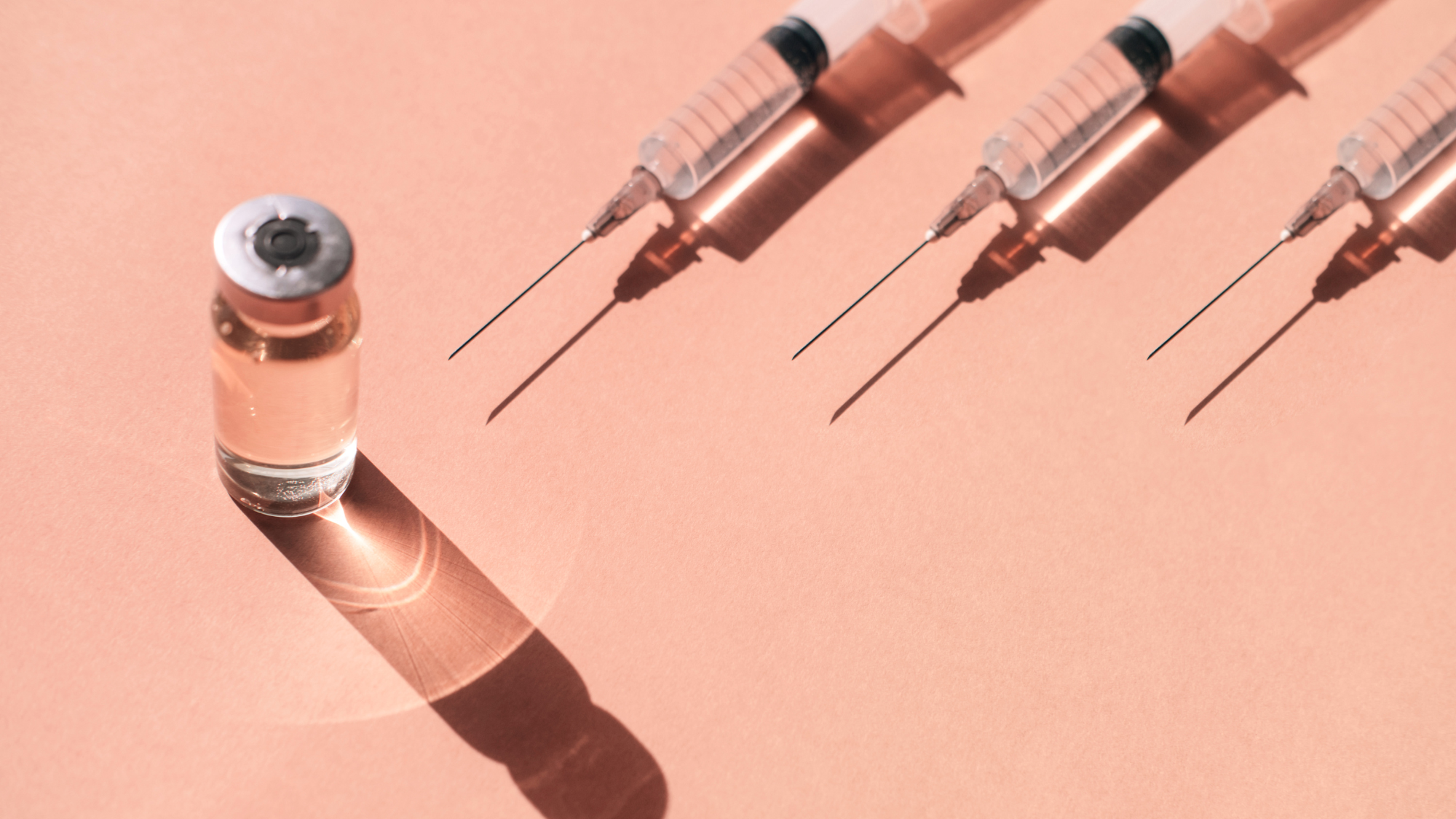There’s a Botox-Related Botulism Outbreak in the UK — Here’s How to Stay Safe If You’re Considering Tweakments
Safety always comes first


When done well, Botox, or botulinum toxin, can be a transformative cosmetic treatment, smoothing wrinkles and softening expression lines in a way that looks refreshed rather than frozen. But with cases of botulism poisoning reported in the UK, this isn't a tweakment to take lightly.
Botulism poisoning is a serious illness caused by a toxin produced by the bacteria Clostridium botulinum. The toxin attacks the body's nervous system, which can lead to paralysis, vision problems and even life-threatening symptoms like difficulty breathing. The bacteria can be found in certain foods that have not been properly canned, preserved or cooked, and is also able to enter the body by an open wound. Luckily, it's incredibly rare with only six cases of botulism poisoning requiring treatment recorded in the whole of England in 2023.
However, a recent botulism outbreak in the East, East Midlands and the North East regions has seen 38 reported cases of botulism poisoning in the last six weeks. The cause? 'Fake' cosmetics injections, using an unlicensed, Botox-like product.
In light of a number of new cases, the UK Health Security Agency (UKHSA) issued a warning to help raise awareness of the signs and symptoms of botulism, which can include difficulty swallowing, slurred speech and breathing difficulties requiring respiratory support.
"Symptoms of botulism can take up to four weeks to develop and if you have had a recent botulinum toxin (Botox-like) treatment and are having symptoms such as difficulty swallowing or breathing, contact NHS 111 for further advice and seek treatment," said Dr Gauri Godbole, Consultant Medical Microbiologist at UKHSA.
Sadly, non-surgical cosmetic treatments are still largely unregulated in the UK, Despite tireless campaigning by a throng of medical professionals and beauty experts, meaning much of the onus falls on individuals to try and protect themselves from adverse outcomes.
Whether you're a seasoned Botox user, or considering it for the first time, here's how to stay safe while seeking treatments...
Celebrity news, beauty, fashion advice, and fascinating features, delivered straight to your inbox!
Is Botox safe?
When administered correctly by a qualified medical professional, Botox is generally considered safe and effective and has been used in both cosmetic and medical settings for decades. That said, it’s still a prescription-only medicine and not without risk. Complications can arise when Botox is injected incorrectly, in the wrong dose, or by an unlicensed practitioner using counterfeit products. Side effects can include bruising, asymmetry, or in rare cases, more serious reactions like muscle weakness or difficulty swallowing. That’s why it’s essential to choose a registered, experienced injector who understands facial anatomy and uses licensed products. Safety isn’t about avoiding Botox altogether, it’s about making informed, confident choices.
How to choose a Botox practitioner
Choosing your practitioner is one of the most important steps in ensuring your safety and achieving your desired results. They should be fully qualified, insured and working out of a medical setting like a clinic.
If you plan on receiving injectable treatments, always go to a medical professional like a doctor or a nurse who understands facial anatomy, hygiene practices and what to do if something does go wrong. It's easy and free to check if someone is a licensed by searching their name in the General Medical Council Register or the Nursing & Midwifery Council Register.
"Patients should always check their injector’s medical qualifications, training, and complication management protocols," advises Dr Priya Verma, a multi award-winning Aesthetic Doctor based in London. "Look for a practitioner who is a doctor, dentist or nurse prescriber with aesthetic medicine experience and ideally someone who has done more than just a basic course in injectables. Just remember, medical qualifications matter more than Instagram followers."
Always book a consultation
You always need to have a consultation prior to your treatment. This is a crucial check-in point and a chance to scope out any red flags before being faced with a needle. Use it as an opportunity to check the clinic looks clean and professional (i.e. not someone's living room), and ask which products they use. Notice if you feel comfortable or uneasy, if you feel pressured, rushed or confused, or if the clinic is advertising two-for-one deals or discounts. These are all red flags and you should keep looking for an alternative practitioner.
For any prescriptive product or injectable, like Botox, it is actually a legal requirement for a patient to undergo a formal, in-person consultation process. In fact, guidance from the General Medical Council specifically states, "you [the practitioner] must carry out a physical examination of patients before prescribing non-surgical cosmetic medicines, such as Botox, Dysport, Vistabel or other injectable cosmetic medicines. Therefore, you must not prescribe these medicines remotely."
The practitioner should listen to your concerns and examine you to make sure you are a good candidate for treatment. They may suggest alternative options if they think you would benefit more from a different approach, or they may refuse to treat you if they do not think it will achieve your desired results. They should check you are psychologically suitable for treatment, manage your expectations around what the treatment can realistically achieve and also make you aware of any associated risks.
Check what products they are using
If you decide to go ahead with your treatment, ask to see the product your practitioner it using. Note what brand it is, for example Botox®, Azzalure®, Bocouture®, which are all licensed products. Look out for the serial or batch number, and check for registered seller marks on the packaging, like the Registered Pharmacy mark or the UKCA (UK Conformity Assessed) mark.
"Patients should always know what’s being injected into their face," says Dr Verma. "Reputable practitioners will be transparent about the brand of filler, where it’s sourced from and whether it's had the relevant regulatory approval and has sufficient safety data for its proposed use. If a practitioner avoids this question, that's a red flag."
Take a 'cooling off' period
After your consultation, you should have a 'cooling off' period to digest the information discussed and weigh up whether it's the right step for you. Current guidance suggests a minimum cooling off period of 14 days for both surgical and non-surgical procedures, although this will ultimately depend on the invasiveness, complexity and permanency of the procedure.
Ask about aftercare
Before you leave, check with your practitioner about aftercare, as well as emergency protocol in case something goes wrong. Ask them what to do if you have an adverse reaction, and who to go to if it is out of clinic hours. If they are reputable they will not only share all the information you asked for, but they will be happy you asked.
"A qualified medical practitioner will be trained to recognise and treat complications, such as blockage of a blood vessel with filler (aka vascular occlusion) or allergic reactions," says Dr Verma. "Always ask your injector what their protocol is in case of an emergency and whether they stock the relevant emergency medications such as hyaluronidase – the enzyme that dissolves filler (a prescription-only drug) and adrenaline in case of a serious life-threatening allergy."
When it comes to injectables, there's no such thing as being too informed. In the right hands, they can be a safe and effective. But they're still medical procedures and should be treated with the same level of care. After all, beauty should never come at the cost of your safety.

Lottie Winter is the Beauty Director at Marie Claire UK. With over a decade of beauty journalism under her belt, she brings a desire to cut through the noise and get to what really matters–– products that deliver, conversations that empower, and beauty that makes people feel like their best selves.